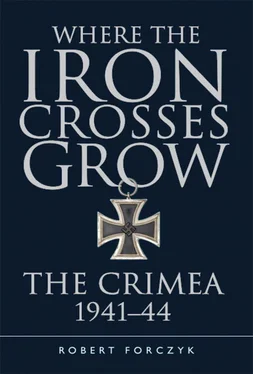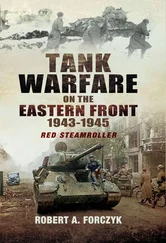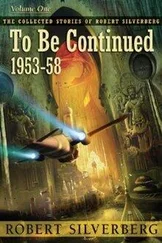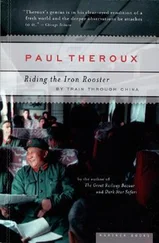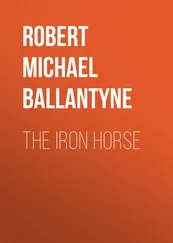Meanwhile, Jaenecke found himself in command of an army that was badly battered and shrinking daily. He was exasperated with Hitler’s unwillingness to evacuate the entire army or to recognize that Sevastopol was a trap, not a fortress. Nevertheless, Jaenecke continued to toe the Führer’s line, and on April 24 he issued a bombastic and inaccurate proclamation to his troops:
Soldiers of the 17th Army, the Führer ordered us to defend the Sevastopol fortress and, by doing so, trusted us with a very important and serious mission. Our mission has a huge importance. The enemy made the mistake of taking powerful forces and an overwhelming number of tanks from the important points of the Eastern Front to send against the Crimea. This superior force succeeded in breaking through our over-extended front on the Sivash only after a hard battle. The quick redeployment of our Army to Sevastopol succeeded in stopping the enemy, forcing them to assault against our determined defence, which caused them terrible losses, they lost 602 tanks between April 8 and April 23. Everything they lose here they will lack in their Western offensive against the heart of Romania.
The actions of the brave German and Romanian soldiers here in Crimea, through faithful duty and bravery, serve a greater purpose. The harder the enemy will struggle to conquer Sevastopol, the safer our country will be, shielded by our actions. We are all aware of the tough battle that lies ahead. The Führer will help us with weapons and reinforcements. But our strongest force is inside us, the determination and unity proved by us in hundreds of battles in the Caucasus, Kuban and the Crimea, by all of us, Germans and Romanians, ground forces, Luftwaffe and Kriesgmarine.
Our motto is: “Not a step back!” Victory is ahead while death lies in retreat. We will stay here as long as the Führer orders us, in this critical spot of the titanic battle. Whoever will try to leave this mission, who will leave his post, those responsible for reducing the limited combat strength of our army, will be executed. Let the Soviets come, they will be destroyed. Let their tanks advance, if you infantrymen cannot stop them, let them enter our positions, they will be easier destroyed there. Every man able to hold a weapon will be sent to the front. All the reserves are ordered to work day and night to fortify the positions in depth. The 17. Armee fights now in a place where thousands of our brave troops offered an example. We will succeed in our mission, like they did, for our country! Long live the Führer! Long live his Majesty King Mihai! Long live Marshall Antonescu!
There was little truth in Jaenecke’s proclamation, and it is doubtful that he believed it himself. The Red Army lost a total of only 171 tanks during the period from April 7 to May 12, 1944, and overall Soviet losses in the Crimea had been relatively light, while Axis losses had been extremely heavy. Nor was Hitler going to send any more substantial reinforcements to the Crimea. The idea that the Soviets were diverting critical resources to liberate the Crimea was the converse of the fact that Hitler had consigned the AOK 17 to hold an untenable position in the Crimea, while the Wehrmacht was desperately short of troops all along the Eastern Front. The Soviets were in no hurry to liberate the Crimea before spring 1944 because they did not want AOK 17 evacuated and transferred to more critical parts of the Eastern Front; Soviet officers joking referred to the Crimea as “an ideal prison camp” where the inmates fed and guarded themselves. Rather than fighting for king and country, the German and Romanian troops in the Crimea were now fighting simply due to Hitler’s unwillingness to face military logic.
Once inside Sevastopol’s perimeter, the German and Romanian troops went underground in order to avoid enemy artillery and air attacks. Large stockpiles of food had accumulated in Sevastopol, and these were freely distributed to the troops in order to maintain morale. One German artillery officer from III./AR 117 stated that “we could not complain about our creature comforts. Chocolate, candy, canned food – as much as we would like. I drank a bottle of wine every evening in my cave.” Some senior German officers still enjoyed sleeping on clean sheets in Sevastopol, despite incessant Soviet bombing and artillery fire.
Gerhard Barkhorn was in Germany for an extended period, and did not return to the Crimea until late April 1944. In the interim, II./JG 52 continued its daily combat with the VVS and inflicted painful losses, despite being badly outnumbered. On the morning of April 17, General-Major Ivan P. Vilin, deputy commander of the 214th Assault Aviation Division (Shad), personally led a low-level raid by four Il-2s against the Chersonese airstrip, but ran into a gaggle of Bf-109 fighters. Three of the Il-2s were shot down, but Vilin managed to reach Soviet lines before crashing; he was rescued but died of his wounds. [9] Maslov, Fallen Soviet Generals , p. 136.
On April 16 Eremenko was transferred to the Baltic front and the Coastal Army, now under General-Lieutenant Kondrat S. Mel’nik, was subordinated to Tolbukhin’s 4th Ukrainian Front. Three days later, the Maritime Army launched a strong attack against the V Armeekorps positions around Balaklava while the 51st Army attacked the center of the Axis line, but neither made progress. Soviet artillery ammunition was still in short supply in the Crimea. On April 23 the Soviets attacked again, and the 2nd Guards Army seized ground on Mekenzievy Mountain, but the tanks of the 19th Tank Corps were stopped by dense minefields. After these attacks were repulsed, Jaenecke was given enough of a respite to reorganize his forces. Gruppe Konrad (XXXXIX Gebirgs-Korps), now consisting of the 50. and 336. Infanterie-Divisionen and the Romanian 1st and 2nd Mountain Divisions, was assigned to defend the northern sector of Sevastopol, including the area around Mekenzievy Mountain. Allmendinger’s V Armeekorps, consisting of the 73., 98., and 111. Infanterie-Divisionen and Romanian 3rd Mountain Division, were assigned to defend the southeast approaches. Only small detachments of the Romanian infantry and cavalry divisions were still left, and they were rolled into the three mountain divisions. All five of the German divisions were reduced to about 30 percent of their authorized strength in personnel and equipment and both corps had only limited artillery left. Hitler made a token gesture of trying to replenish AOK 17’s losses in men and equipment by sending 1,300 replacements, 15 antitank guns, and four howitzers, but this was a drop in the ocean. [10] Carell, Scorched Earth: The Russo-German War 1943–1944 , p. 467.
Despite his bombastic proclamation, Jaenecke knew that AOK 17 could not withstand a determined enemy assault, so he demanded to know when more reinforcements would arrive in the Crimea and requested “freedom of action” in the event that Tolbukhin launched an all-out offensive. This was too much for Hitler, and he ordered that Jaenecke personally report to him at Berchtesgaden on April 29. Once in Hitler’s presence, Jaenecke argued that the rest of AOK 17 had to be withdrawn immediately or face destruction. Hitler was infuriated that a general would talk to him in this manner and began screaming at him. Jaenecke simply turned and left the room, slamming the door. Striding past Hitler’s adjutant, Jaenecke said, “Tell the Führer I have left” and drove off to the airfield. [11] Soenke Neitzel, Tapping Hitler’s Generals: Transcripts of Secret Conversations, 1942–1945 (St Paul, MN: MBI Publishing, 2007), p. 259.
Jaenecke did not get far. Hitler had his plane stopped in Romania and ordered the Generaloberst placed under arrest. Hitler ordered that Generaloberst Heinz Guderian conduct a formal inquiry into Jaenecke’s behavior and hold a formal court martial; Guderian obeyed the letter of the order, but in a deliberately slow manner. Meanwhile, General der Infanterie Karl Allmendinger was ordered to take command of AOK 17. Apparently believing that AOK 17 needed leaders made of firmer stuff, Hitler ordered that Generalleutnant Friedrich-Wilhelm Müller would fly from Crete to take over V Armeekorps. Müller had distinguished himself in the Crimea as a regimental commander in the 72. Infanterie-Division in 1942, but subsequently had earned a reputation as “the Butcher of Crete,” which was the kind of man Hitler wanted in a tight spot. Müller did not arrive in the Crimea until May 4.
Читать дальше
